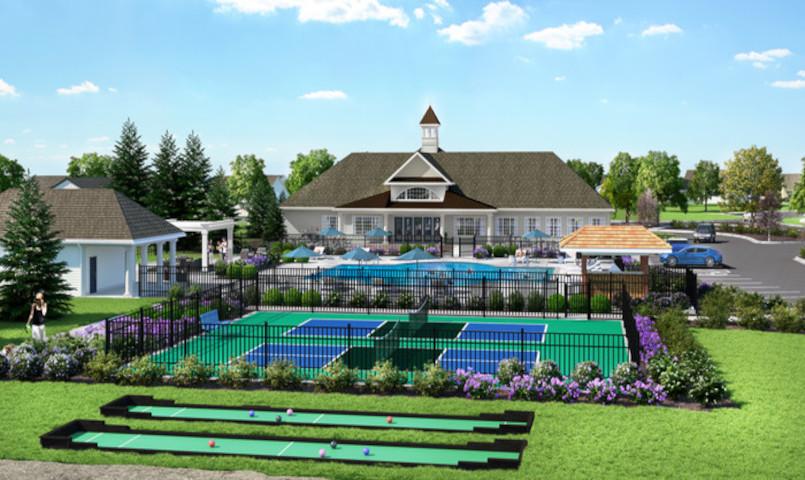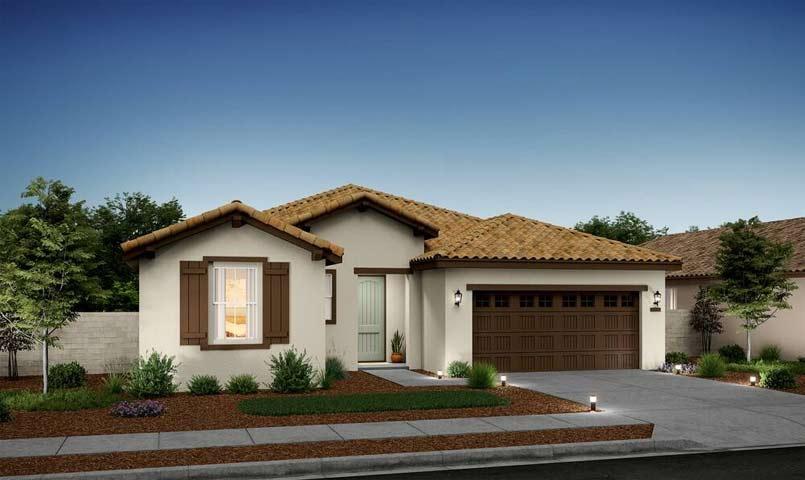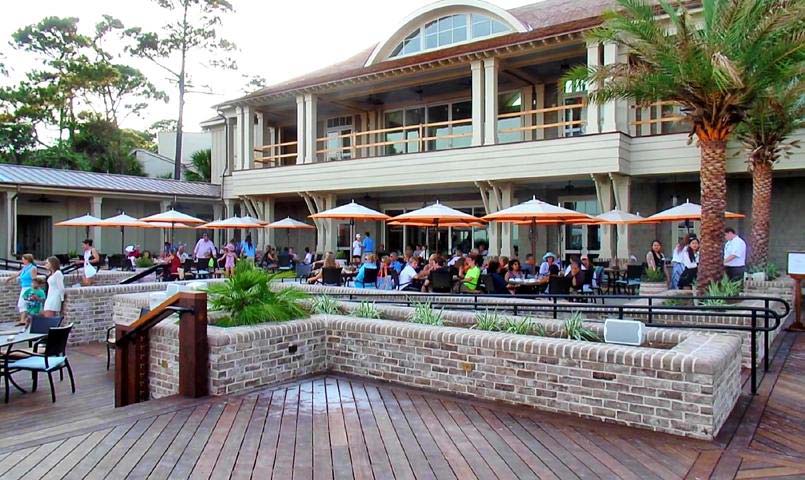by Robert Borges on March 7, 2025
8-minute read
Jump to:
What is an Active Adult Retirement Community?
The Benefits of Active Adult Retirement Communities
How to Choose an Active Adult Retirement Community
Retirement Communities for Active Adults
Top Active Adult Community Homebuilders
Making the Transition to a Retirement Community
Finding the Best Active Adult Retirement Communities
What you'll get from this article: All the info you need to determine if an active adult retirement community is right for you. Spoiler alert: if you're looking for a laid-back low-maintenance lifestyle with recreational amenities and social opportunities among neighbors at a similar stage in life...the answer is probably "yes!" Read on for details.
Retirement is no longer just about slowing down—it’s about embracing a vibrant, fulfilling lifestyle. As more seniors seek an active and engaging way of life, active adult retirement communities have redefined what it means to retire. These communities offer resort-style amenities, social opportunities, and low-maintenance living, allowing retirees to focus on what truly matters—enjoying life to the fullest.
Whether you're exploring homes for sale near the beach, considering the benefits of pickleball communities, or interested in the latest smart home technology for seniors, this guide will help you determine if an active adult retirement community is the right fit for your lifestyle.
Join us as we dive into every aspect of active adult retirement communities from what they are, the benefits they offer, where to find them, how to choose the right one for you, and more.
What is an Active Adult Retirement Community?

Retirement communities provide living arrangements tailored for seniors, ranging from communities designed for those aged 55 and over looking to remain active and independent to specialized continuing care communities for those in need of more assistance.
While there are several options (and also a handful of myths) for what we traditionally refer to as a “retirement community,” PCR’s nearly 30 years of experience in the industry spotlights active adult retirement communities focused on independent living.
Age-Restricted Retirement Communities for Active Adults
Age-restricted retirement communities, aka 55-plus communities, create an environment for active adults seeking a vibrant and autonomous lifestyle. These real estate developments for seniors prioritize retirement-friendliness, low-maintenance, age-targeted features and amenities, and independence. Living in an active adult, age-restricted community offers numerous advantages for those who want to be among their contemporaries while embracing a dynamic and health-conscious lifestyle.
Today, these types of communities have exploded in popularity and development, and are helping to change the traditional definition long associated with “retirement communities.”
Benefits of Active Adult Retirement Communities

From cultivating social engagement to prioritizing health and wellness and offering maintenance-free living, active adult retirement communities offer many benefits to their residents.
Social Engagement
Living in a retirement community offers an atmosphere primed for socialization and neighborly interactions, creating meaningful connections and friendships. Residents enjoy a built-in community, participating in group activities, events, and shared interests, promoting a sense of belonging and reducing isolation. Many communities even have full-time lifestyle directors to plan regular events, coordinate clubs, and more.
Health and Wellness
Time and again, PCR users in search of retirement communities cite the same amenities as “must haves”: walking/biking trails, fitness centers, and swimming pools. So it’s really no surprise that community developers prioritize health and wellness, providing access to fitness facilities, resort- and Olympic-style swimming pools, spas, wellness programs, and even healthcare services. For today’s seniors, there’s nothing more important than staying active and involved as it contributes to physical, mental, and emotional well-being.
Safe, Maintenance-Free Living
One of the significant advantages of retirement community living is the liberation from household chores. Low-maintenance, and even maintenance-free living allows residents to savor their golden years without the burden of home upkeep, freeing up time for leisure, hobbies, and pursuits that bring joy and fulfillment. Often gated for added privacy and security, the neighborhoods in 55+ retirement communities are carefully planned and built to accommodate buyers looking for single-level homes with specific floorplans, designs, and accommodations for older buyers.
Choosing a Retirement Community
Sure, there’s a lot that goes into retirement planning, especially if it involves a move. But preparing for retirement and exploring retirement communities doesn’t have to be an arduous task. When researching and eventually choosing a retirement community to call home, there are a few things you’ll want to make sure to consider:
- Location: If you’re thinking of thinking of relocating to another state when you retire, you’re not alone. In fact, 70% of those we surveyed said they’ll be crossing state lines for their retirement community, be it for weather, financial reasons, or simply a change of scenery. Regardless, be sure to research all possible locations and when you’ve narrowed it down, learn everything you can about the climate of your chosen retirement destination, considering potential seasonal variations that might differ from short-term visits. Also consider airport proximity if you’ll be away from extended family.
- Recreation: Seek communities with diverse social and recreational activities to ensure a well-balanced retirement lifestyle. If you’re an outdoor enthusiast, look for retirement communities near parks, oceans, lakes, trails, etc. If you’re into arts and culture, make sure you’re within a feasible driving distance to urban centers and larger cities.
- Lifestyle: Choose a community aligned with your preferences, considering 55+ HOA rules and regulations, clubs, amenities, pet policies, and more. If you’re an equestrian, an angler, a golfer, a surfer, a hiker, a kayaker, a skier…chances are there’s a community that has the accommodations you’re looking for!
- Medical Care: Prioritize available medical care options and be sure to gather comprehensive information on local/onsite providers, specialists, and quality primary care physicians within proximity.
- Maintenance: Clarify property upkeep responsibilities and associated costs—understand whether it's covered by monthly fees or billed separately for each project.
- Budget: Financial considerations are crucial; assess affordability by examining entrance fees, monthly charges, hidden costs, and tax implications. If you’re considering a move to a new state, what is the cost of living relative to where you currently live? Is it a tax-friendly state for retirees? Consult trusted individuals or professionals for informed financial decisions.
Types of Retirement Communities for Active Adults

Active adult communities have become increasingly popular for retirees. Designed for residents aged 55 and above, they provide a range of resort-style amenities and lifestyle options. Here are just a few types of retirement communities for active adults:
- Golf Communities: Catering to golf enthusiasts, these communities feature golf courses, expansive clubhouses, pro shops, driving ranges, and related amenities that promote a social atmosphere centered around the links.
- Boating and Waterfront Communities: Ideal for individuals who enjoy waterfront living and water-based activities, these communities often provide access to lakes, rivers, or coastal areas and even include private marinas and related services.
- Tennis Communities: Designed for tennis lovers, these communities feature tennis courts and related facilities, tennis clinics, on-site pros, and more.
- Pickleball Communities: Even more popular than tennis these days, pickleball has taken the retirement scene by storm. In pickleball retirement communities, residents have access to world-class facilities and often compete in regular tournaments.
- Fitness-Oriented Communities: Tailored for those with a passion for fitness, these retirement communities offer state-of-the-art facilities, classes, and activities to support an active and healthy lifestyle. They often include miles of trails that weave through the community for walking, jogging, hiking, and biking.
- Margaritaville Retirement Communities: Known for their laid-back beach vibes and Jimmy Buffet inspired services and amenities, Latitude Margaritaville retirement communities have totally captivated the active adult population since the first opened in 2018.
Those are just some examples of the lifestyle-oriented retirement communities that promote diverse and independent living. In many cases, your chosen retirement community may contain any and all of those amenities, and then some!
Top Active Adult Community Homebuilders

Since 1996, PCR has partnered with the nation’s top 55+ community builders and developers. Offering a range of attractive floorplans and elevations tailored toward low maintenance living, these developers and builders of retirement communities don’t just prioritize high-quality homes. They also choose locations with amenities that promote stress-free living, health, wellness, convenience, and community engagement.
These top homebuilders in the country excel in optimizing lots, homes, and communities for an active lifestyle:
- Trilogy by Shea Homes
- K. Hovnanian Four Seasons
- Cresswind Kolter Homes
- Lennar Heritage Collection
- PulteGroup Del Webb
- D.R. Horton Freedom Homes
- Minto’s Latitude Margaritaville
Making the Transition to a Retirement Community
Moving to a retirement community can be an adjustment. Often involving downsizing and/or moving to another state, planning and careful preparation are key when making the transition.
There are several considerations that can make the transition to a retirement community much smoother. For an extensive breakdown of planning and prep suggestions, read more here. In the meantime, here a few important things to consider as your moving date gets closer—and soon after you’ve arrived at your new destination:
- Notify Requisite Parties. Before your move, inform key entities of your address change: banks, credit card companies, insurance providers, and other regular mail senders. Then set up mail forwarding with the postal service to receive any mail still directed to your old address.
- Handle Your Healthcare. Research healthcare providers in your new state to ensure access to quality medical care, specialists, and prescriptions. And be sure to coordinate with your current healthcare provider for a smooth transition.
- Explore Essential Services. Familiarize yourself with local grocery stores and other essential services. Identify and research alternatives for places, services, and amenities you're accustomed to in your current location, such as favorite restaurants, banks, veterinarians, and more. Planning ahead will help you seamlessly integrate into your new location.
- Create New Connections. Moving often means leaving familiar faces behind. To ease the transition, join local community groups, attend events, and engage in activities aligned with your interests. The good news is this is easy when moving to an active adult retirement community!
Find the Best Active Adult Retirement Communities

If you’re ready to explore the possibilities of an active lifestyle community, PrivateCommunities.com is your go-to resource. Featuring hundreds of communities across the country—including retirement, 55+, golf, and gated communities—PCR connects you with the best options for resort-style amenities, social engagement, and affordable, low-maintenance homes. Start your search today and find the perfect place to enjoy your next chapter.
About the Author
With over 20 years of experience as a seasoned content creator, Robert Borges is the senior writer for Private Communities Registry (PCR), specializing in real estate trends and master-planned communities. He works closely with builders, developers, and real estate pros to create helpful content that guides homebuyers in finding the perfect community, ensuring they have the information needed to make confident, informed decisions.
